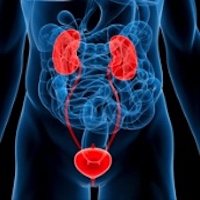Intralesional injection of the calcium channel blocker Verapamil in Peyronie's disease: A critical review

Accepted: February 17, 2020
All claims expressed in this article are solely those of the authors and do not necessarily represent those of their affiliated organizations, or those of the publisher, the editors and the reviewers. Any product that may be evaluated in this article or claim that may be made by its manufacturer is not guaranteed or endorsed by the publisher.
Authors
Objective: To assess the effectiveness of an intralesional injection of verapamil in men with Peyronie’s disease (PD).
Materials and Methods: The data provided in the current review are based on a thorough review of the available original articles on PD retrieved with a systematic literature search using PubMed- Medline, and the Cochrane Central Register of Controlled Trials, up to December 2019, to identify studies dealing with Peyronie’s disease and its treatment. Included were only original articles, that we thoroughly evaluated. We searched for the primary and secondary terms of: “Peyronie’s disease,” “Penile curvature,” “Erectile dysfunction,” “Verapamil and Peyronie’s disease,” “Calcium channel blocker,” and “Intralesional injection.”
Results: The initial search of the databases yielded a total of 1240 studies (PubMed: 1058; Cochrane: 182), as of December 2019. Seventy studies were removed due to duplication. Further 986 studies were removed due to not being in English (except for one study by Arena F. for which we got a translation form Italian), being about animal experimentations, not being full-text, and not being clinical trials. Likewise, studies not referring at all to verapamil were excluded (148). From the remaining 36 full-text articles we focused on 13 studies which met the inclusion criteria, mainly being deemed relevant to the context of this study.
Conclusions: Calcium channel blockers have been shown in both in vitro and in vivo studies to inhibit the synthesis and secretion of extracellular matrix molecules, as well as to increase collagenase activity. Patients with localised plaque are the best candidates for intralesional injections of verapamil. The beneficial effects of intralesional verapamil are apparent within the first three months. For patients who respond to treatment, the injections should be continued for six months. Patients who fail to respond to intralesional verapamil or whose angulation is greater than 30° at presentation should be considered candidates for surgery. Injection of verapamil is clinically safe for patients with Peyronie’s disease, and it appears to induce a rapid, beneficial effect in patients for the reduction of plaque size. Intralesional verapamil injection for Peyronie’s disease could reduce pain, decrease penile curvature, and improve sexual function.
How to Cite

This work is licensed under a Creative Commons Attribution-NonCommercial 4.0 International License.
PAGEPress has chosen to apply the Creative Commons Attribution NonCommercial 4.0 International License (CC BY-NC 4.0) to all manuscripts to be published.

 https://doi.org/10.4081/aiua.2020.3.253
https://doi.org/10.4081/aiua.2020.3.253



